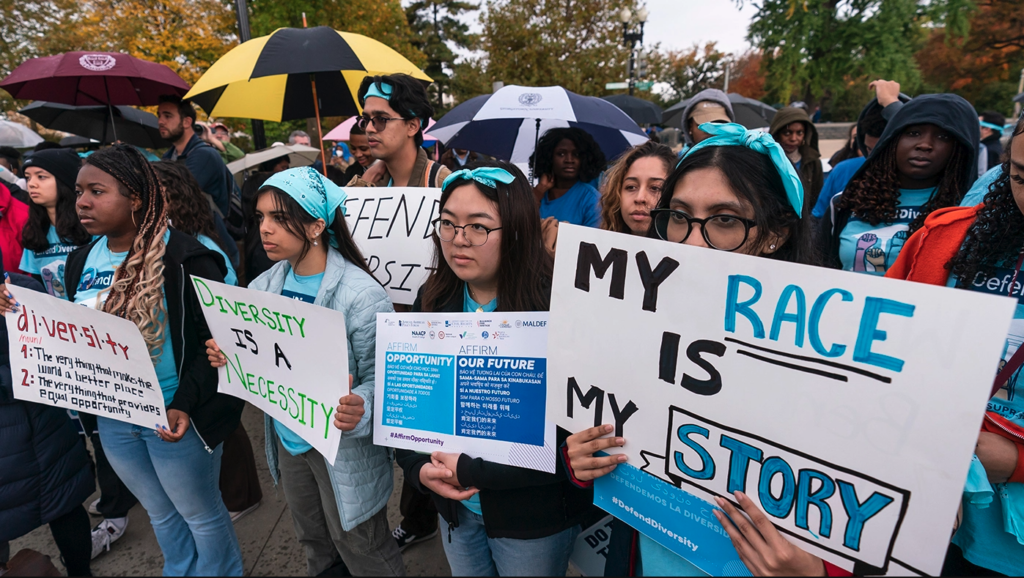Are universities preparing to circumvent Supreme Court decision banning affirmative action?

The Supreme Court is weighing whether to prohibit the use of race as a criterion for admissions. If that occurs, many universities will likely seek ways to circumvent the decision to continue the racial quotas now in place.
Although all universities deny having quotas, many have numerical “targets” or “goals” that in practice amount to quotas. These quotas are both floors and ceilings: They are floors for applicants of color and ceilings for Asian- Americans.
Already some universities are beginning the process of circumvention by eliminating objective criteria such as test scores. Without test scores, admissions officers can substitute subjective factors as surrogates for race. It was alleged in the current Supreme Court cases that this is precisely what is being done with some highly qualified Asian American applicants, who are being turned down based on vague criteria that are widely thought to smack of racial bias.
“Diversity, inclusion and equity” are the current surrogates. They are defined narrowly to emphasize race, rather than intellectual, economic, religious and other diversifying factors that are highly relevant to universities’ academic missions.
Under current policies in many universities, a wealthy Black applicant from a prominent family who attended a fancy prep school is favored over a first generation Asian-American who’s had to work while attending public school. This so precisely because there are numerical quotas that don’t distinguish based on individual factors.
It is also because it is easier for admissions officers to consider something as simple race – just look at the checked box – than to evaluate each individual based on a variety of relevant factors. It was also easier to consider test scores and grades, but emphasizing such criteria makes it more difficult to reach the racial quotas or targets.
So, the tactic is to eliminate or minimize test scores and to employ criteria that mirror race without explicitly running afoul of any Supreme Court ruling and without reducing the number of admitted minority applicants.
Many universities have considerable experience going back many years in such circumvention, since they have been doing it for more than a century with Jewish and Catholic applicants. Elite schools such as Harvard, Yale, Wellesley, Stanford and Princeton denied employing religious quotas, but everyone knew the precise numbers that turned out every year.
They knew how to manipulate criteria such as “character,” “manners” and “compatibility,” which the negatively targeted groups were deemed to lack, to limit the number of undesirables. They didn’t fool anyone, but in those days, they didn’t have to, because the law did not protect applicants who had been discriminated against.
Soon it will, and so the schools will have to be more subtle and less transparent. As my former colleague Lawrence Tribe put it: “Universities as intelligent as Harvard will find ways of dealing with the decision without radically altering their composition. But they will have to be more subtle than they have been thus far.”
I leave it the reader to interpret Tribe’s remark. But it sounds to me that he is advocating a process that leaves the racial quotas or targets essentially intact, while being less transparent about employing race as a criterion to achieve those quotas.
What kind of message does it send to our future leaders, now studying at universities, when prominent professors and administrators try to circumvent Supreme Court decisions, even to achieve praiseworthy ends?
This is different from the way southern universities sought to circumvent desegregation decisions in the 1950s and 60s. They created subterfuges for discriminating against African American applicants. Current university administrators are seeking subterfuges for discriminating in favor of such applicants — at the expense of other applicants.
But although the ends are very different, the means are quite similar.
This is yet another example of ends believed to be desirable justifying means that are not. We see that today in many contexts, such as the selective weaponization of the criminal justice system to target political enemies. It’s done subtly and without fingerprints.
But it eats away at constitutional protections. Those of us who care about constitutional means as well as ends will be watching and holding circumventors to account, regardless of their good motives. As Justice Brandies aptly observed: “The greatest dangers to liberty lurk in insidious encroachment by men of zeal, well meaning but without understanding.”
Read the piece from The Hill here.
